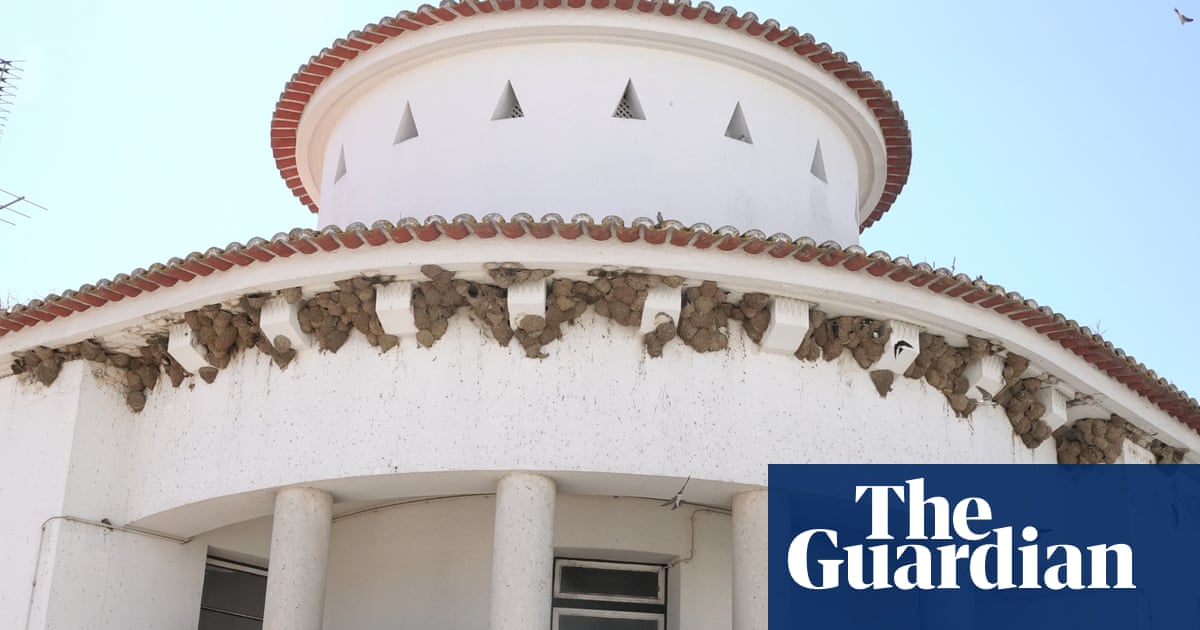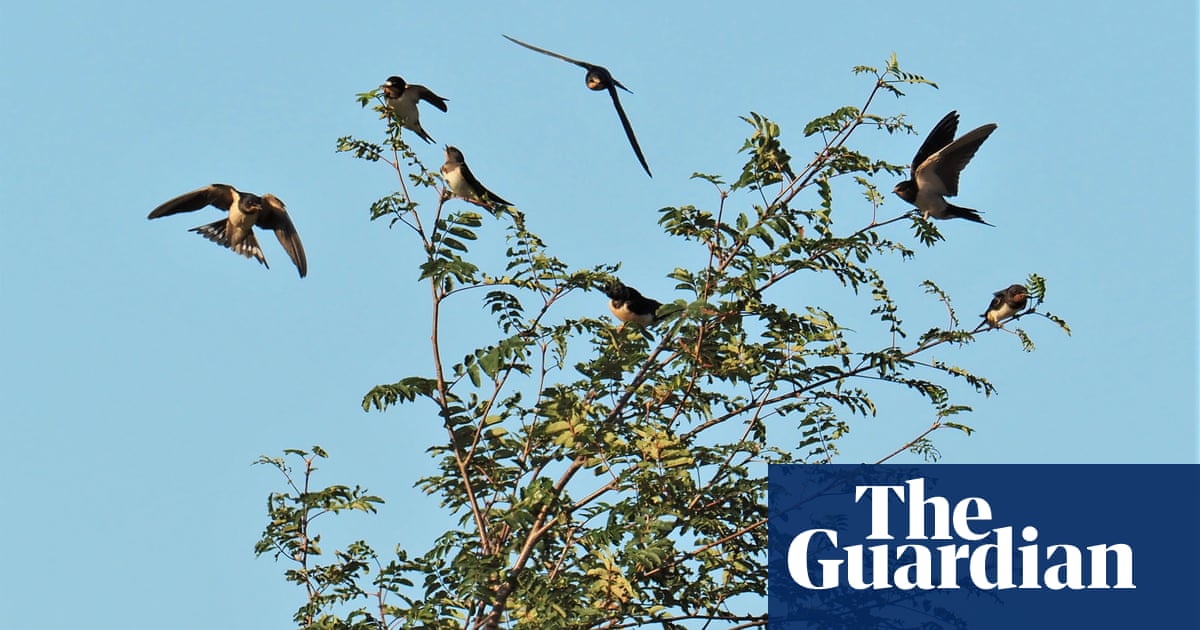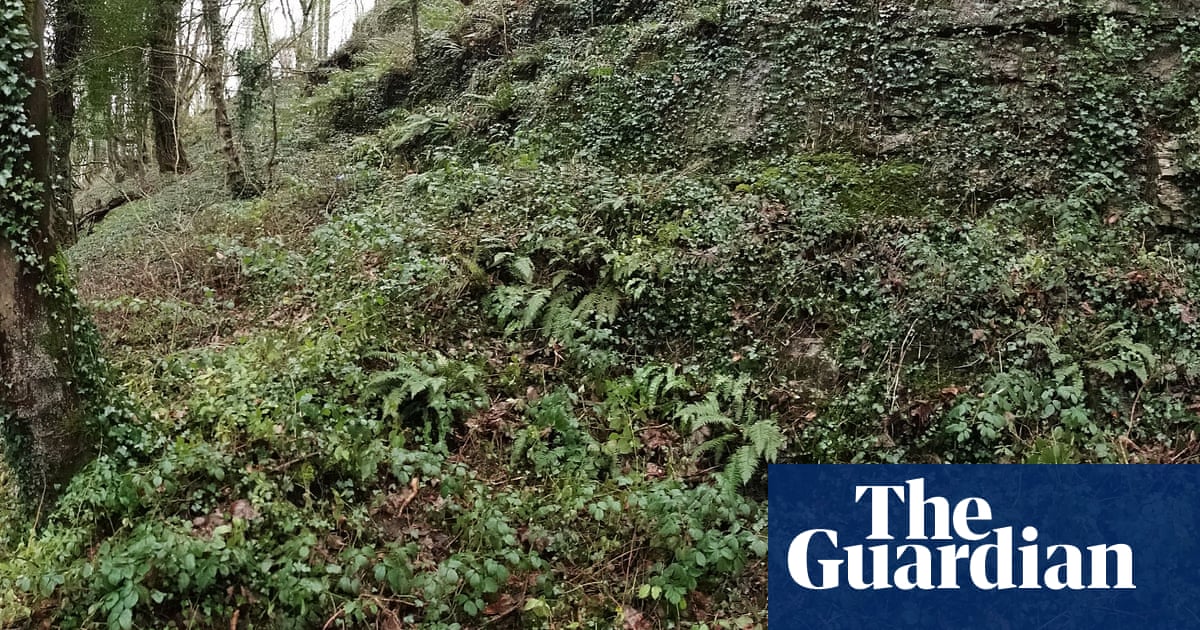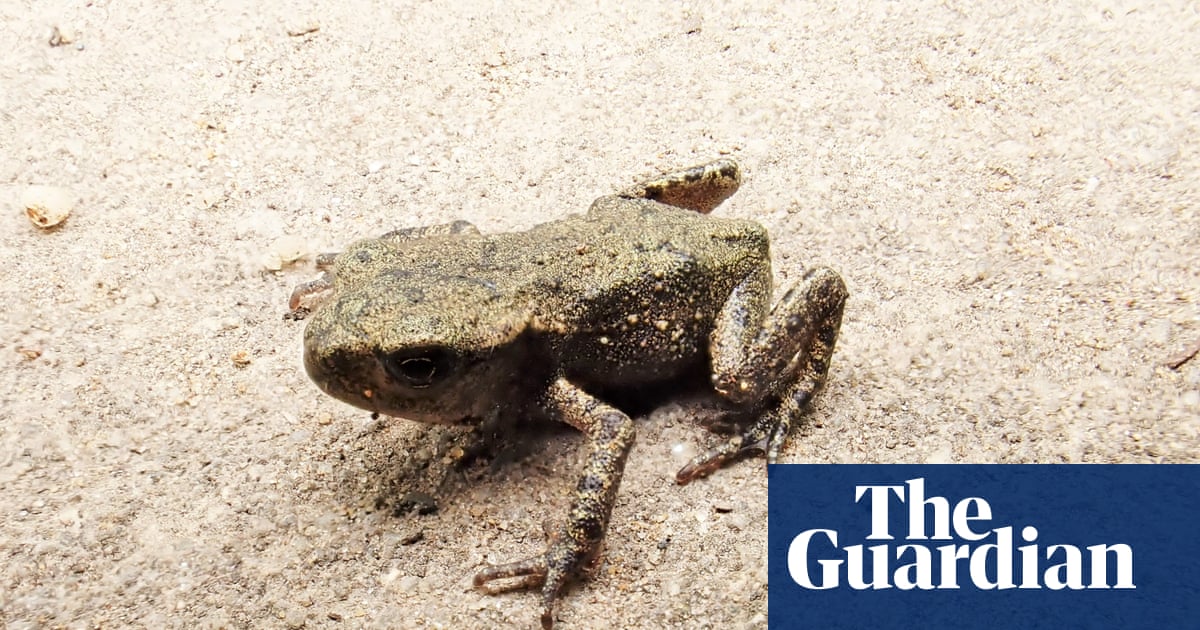
Just off the main square in this southern Alentejo town is a post office of semicircular shape. It’s an attractive structure somewhat resembling a tiered wedding cake, and at the point where its curved front meets the first flat, tiled roof is a series of protruding brick supports. Into the 10 alcoves framed by these and spanning no more than six metres of the whole facade, house martins have inserted roughly 200 of their little mud-brick houses.
Scores of the chattering labourers fly in and out of their works to present to any passing observer a glorious, ever-changing weave of blue-and-white flight lines. We were far from the only people to stop and admire this beautiful, kinetic sculpture, yet it’s also the most densely packed subcolony of this species I’ve seen in my life.
In the whole town there must be many hundreds, if not thousands, of both swallows and martins breeding. A nearby water tower, within sight of the town square, supports a further 50 nests. A tiny arched entrance to Castro Verde’s market ground had 11 nests clustered round a single light fitting. This alone is possibly more pairs than breed now in my Derbyshire home town of Buxton. Given the catastrophic loss of house martins across all Britain (about half have disappeared since 1970), Castro Verde serves as a powerful reminder of what we’ve lost, but it may also illustrate one reason why we’ve lost them. Not everyone can put up with the mud nests above and the ha’p’orth of mess below, and people routinely discourage them.
Before getting dewy-eyed about a contrasting deep tolerance shown by the Portuguese for these fabulous birds, I should add that around the town square, many buildings had fine metal spikes protruding at the point where house martins customarily build. I suspect, however, that the birds have found a way around this by adding more mud cells on top of a first layer of nests, sometimes two or three deep, the spikes therefore having no impact. For now, both birds and people are getting along just fine and, surely, to their mutual benefit.












